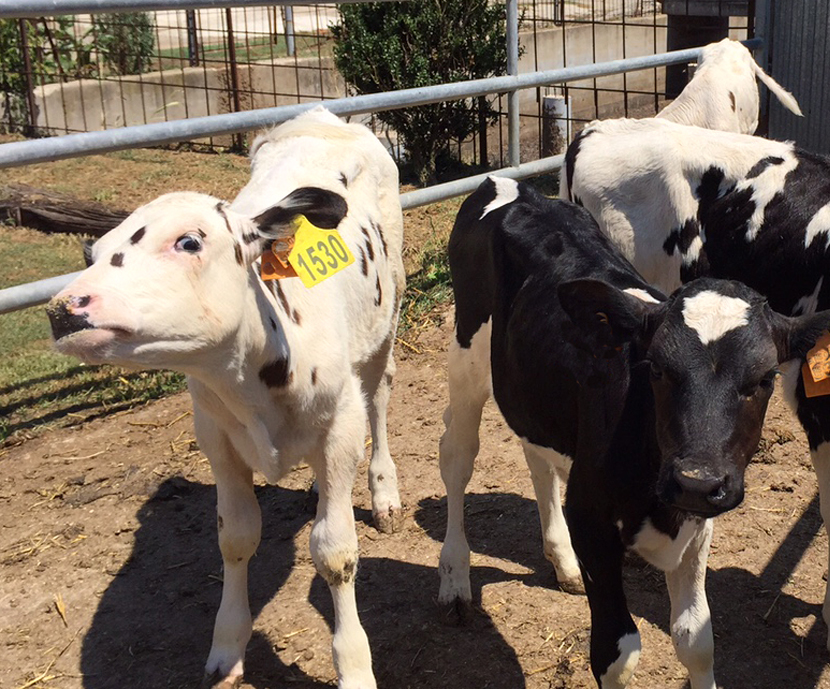 15 Aug 2022
15 Aug 2022
Calves’ artificial breeding and feeding is a common practice within the dairy industry, but it must be done properly in order to take advantage of its benefits.
The period comprised from birth to weaning is extremely important in dairy cattle. This is due to the the strong correlation that exists between weight gain during this period and the future production levels of calves.
Ruminants have three forestomachs: rumen, reticulum and omasum; and a true stomach which is the abomasum. At birth, the abomasum is the most developed and functional portion of the calf’s digestive tract (the digestive physiology is similar to that of monogastrics during this period).
The objective of feeding during this stage is to achieve an adequate growth in calves, which allows optimal daily weight gains and a rapid development of the forestomachs, especially that of the rumen. As a result, they will transition from lactating calves to ruminants, and soon they will be able to feed on raw materials (such as fodder or feed) which have lower costs compared to milk.
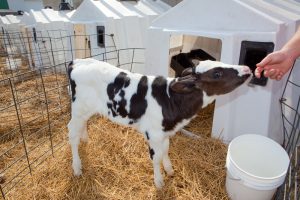
Colostrum intake
Calves are usually separated from their mothers between 24 and 72 hours after birth due to management, health and economic reasons. During this period the bond between the mother and the calf is essential for ensuring their survival.
Colostrum is the the mammary gland’s first secretion after birth. It fundamental to ensure good health status in newborn calves. The first colostrum intake should occur within the first 6 hours of life.
Adequate colostrum intake allows to reduce disease onset during the productive life of the calf as a mature cow. As it is through colostrum that the calf will receive antibodies (immunoglobulins) to develop its immunity. Since the calf’s intestinal wall loses its absorption capacity for colostrum, becoming null after 24 hours post birth, it is key that colostrum intake occurs as soon as possible. This will allow the calf to absorb a greater amount of immunoglobulins. [register]
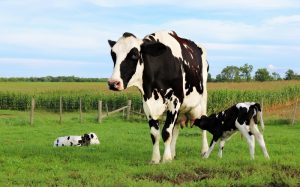
Not only is the timing of colostrum consumption important, but also that of the quantity and quality(intake must be close to 10% of the calf’s live weight . A colostrum with an immunoglobulin concentration greater than 50 g/lt is considered to possess sufficient quality to provide adequate calf immunity.
However, in certain situations colostrum quality is inadequate. This can occur due to various factors such as:
The calf can suckle colostrum directly from its mother, or consume colostrum supplied in a bottle from another cow that has been previously milked. Refrigerated or frozen colostrum can also be supplied.
The nutritional composition of colostrum is superior to cow’s milk (see Table 1). In addition to its nutrient contribution, it is essential for thermoregulation and meconium excretion in the neonate.
Table 1. Approximate composition of colostrum and bovine milk

Liquid feed
Although maternal milk represents the best food source for newborns, in dairy production systems where calf rearing is done artificially, practical, health and economic factors lead many producers to the replacement of milk in liquid diets with dairy substitutes.
Table n°2 shows an example of the elements that make up a dairy substitute and its nutritional composition.
Table 2. Composition of a dairy substitute
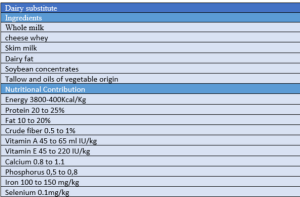
There are several ways in which liquid food can be administered. Such as: through bottles, buckets (requires previous adaptation), modified buckets with a teat, collective troughs, rafts or carts with nipples. Any of these options can be suitable. Therefore, it is just a matter of producers choosing the option that best suits their production systems.
The amount of liquid food that was traditionally suggested was that of 4lts, divided into two doses. Supplying one in the morning and one in the afternoon. Several recent trials indicate that higher milk consumption or dairy substitute intake per day, improve calves’ future productive performance.
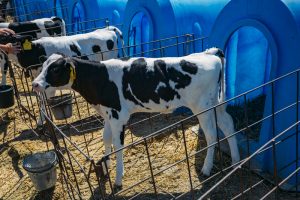
In addition to liquid feed, calves should begin to receive solid feed once they have adapted. This aims to achieve an anticipated ruminal development.With the purpose of transitioning to a 100% solid diet which simplifies feed management. Considering that the supply of milk or dairy substitutes is more time consuming. As liquid diets usually take more time to be prepared, and all utensils must be washed afterwards.
Rumen development
The speed at which the development of forestomachs is achieved is closely linked to the type of food being consumed during that period.
Table 2. Relative capacities of the calf’s stomach forestomachs as a function of age, expressed as total gastric capacity.

Modified from Relling and Mattioli, 2002.
There are balanced concentrates available on the market with 18% protein content that favor microbial population growth in the rumen. Such feed must be highly digestible, provide fiber and significant energy levels.
Calf feeding with this type of concentrates must begin with approximately 100 grams offered on the first day.This amount must be increased daily. Once in the rumen, feed begins to be fermented with the subsequent production of volatile fatty acids(VFAs): acetic, propionic and butyric. The latter holds an important role in the development of rumen papillae. These in turn are responsible for the nutrient absorption that occurs through the walls of the rumen.

The beginning of solid feeding is not always easy, as calves refuse its consumption. An alternative to promote intake in calves, is to offer them feed in a wedge-shaped hand, right after they received dairy feeding.
Once consumption of starter food is established, liquid feed can be gradually reduced until reaching complete milk suspension between 21 and 30 days of life.
From 5 or 6 weeks of age it is advisable to offer calves good quality hay, in order to help the development of rumen walls and activate the process of rumination and salivation.
It is essential to provide water from the beginning. Water aids in bacterial colonization of the rumen and promotes feed consumption. It must be available all day, especially under hot weather.
Conclusions
Investments made during the breeding stage of calves will translate into greater sanitary status and better growth rates, reducing first service age and increasing productive performance.
[/register]
Subscribe now to the technical magazine of animal nutrition
AUTHORS

Nutritional Interventions to Improve Fertility in Male Broiler Breeders
Edgar Oviedo
The Use of Organic Acids in Poultry: A Natural Path to Health and Productivity
M. Naeem
Synergistic Benefits of Prebiotics and Probiotics in Poultry, Swine, and Cattle
Gustavo Adolfo Quintana-Ospina
Hybrid Rye Potential in Laying Hen Feed Rations
Gwendolyn Jones
A day in the life of phosphorus in pigs: Part I
Rafael Duran Giménez-Rico
Use of enzymes in diets for ruminants
Braulio de la Calle Campos
Minerals and Hoof Health in the Pregnant Sow
Juan Gabriel Espino
Impact of Oxidized Fats on Swine Reproduction and Offspring
Maria Alejandra Perez Alvarado